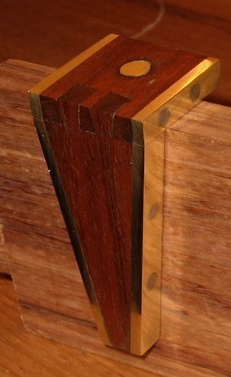David C
In Memorium
Pete's gauge has the huge advantage that one uses one implement for slope and square line. I used a bevel and square for many years and am delighted to have stopped!
Similarly I can see no merit in the traditional layout method involving, sloped ruler, and parallel lines back to the end. This only gives center lines, which would encourage one to want one of BoB Wearing' more complex adjustable gauges. The divider method is simpler, quicker and more accurate method for laying out dovetails.
Moving stuff around in the house. Two chests of drawers. In Every socket the slopes are sawn past the shoulder line.
Best wishes,
David Charlesworth
Similarly I can see no merit in the traditional layout method involving, sloped ruler, and parallel lines back to the end. This only gives center lines, which would encourage one to want one of BoB Wearing' more complex adjustable gauges. The divider method is simpler, quicker and more accurate method for laying out dovetails.
Moving stuff around in the house. Two chests of drawers. In Every socket the slopes are sawn past the shoulder line.
Best wishes,
David Charlesworth




































